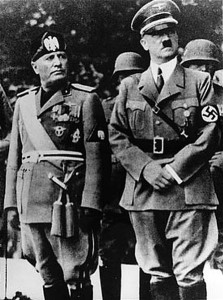In the introduction to his most famous work, Modernity and the Holocaust, Zygmunt Bauman argues from a sociological perspective that the genocide of non-Aryans by the Nazis in an effort of ethical cleansing can only be strictly understood in the context of a modern and civilized society. His view is quite radical, especially to those raised in the West who have been ingrained with the ideology that developed cultures exclude those that practice all forms of brutal savagery, particularly a Holocaust. Bauman throws away this traditional theory. He also rejects the thesis that the Holocaust was the work of madmen or explainable through European anti-semitic tendencies as extremely simplified and therefore non-considerable.
On the other hand, Bauman asserts his own powerfully convincing thesis — That the true potential of a modern, civilized society is actually exemplified through the Holocaust and is representative of the cruel reality that humans are capable of creating. He cautions that if not prevented, it is in the realm of possibility that either current or future societies are adapted to committing genocide on perhaps an even larger scale than what was witnessed in the dark period of the early 1940s. Further, he makes clear that this genocide was not committed by a group of anomic barbarians, but a so-called moralized and democratic society that not only allowed the creation of death camps but was complicit and vital to their functioning. Through implementing the production capabilities of the industrialized factory system, coordinated with the efficiently organized chain of command facilitated through bureaucracy, the Third Reich applied the advanced technological and business models available in the 20th century to a sophisticated killing machine, the concentration camps. To Bauman, the success of the Nazi’s mass murder scheme was rooted in its ‘correct use’ of bureaucracy. It was essential that the German administration utilized this formalized system of procedure to have efficiently achieved their government goals by synthesizing (1) the civil service composed of ‘normal’ citizens, (2) brute military force, (3) an industrialized mode of production, and finally (4) a single political party that provided an overall idealistic sense of a united nation. (13-14 Bauman) In the Third Reich, tied to the sense of a united nation was a united German Volk, of only the purest Germanic blood. Hitler’s functional objective of a judenfrei Germany was not originally presented in the terms of ridding the world of all Jewry through mass murder. His sinister dream of a ‘racially pure’ Aryan nation began in active forced deportation of minority groups to surrounding European nations. But as the war continued and the National Socialists political-military prowess and territory swelled, Germany quickly was responsible for more Jews than they knew what to do with or had any desire to humanely deal with.
As Bauman explains, The Final Solution was enacted and rationalized in a civilized nation through a tri-fold effect that would only have been possible in a modernized state. First, the SS hierarchy always shifted duty for otherwise immoral acts to a superior in command. Second, killing was always performed when capable at a physical distance with the aid of technology and never with zealous motivation, only professional efficiency due to the Fuhrer and Vaterland. In this way, responsibility for mass murder was diverted (in the minds of the killers) by the flick of an electrical switch and the psychological intention of murder was detached from the physical act of murder. Gas chambers were used purposefully; a chemical and technological barrier between the victim and the killer was intentionally in place. Shooting was discouraged and by the time the Einsatzgruppen mobilized, executioners who were overzealous about the concept of carrying out the firing squad were removed from that station. Finally, the Nazis systematically removed anything close to resembling humanity and humanness from their victims through removal of all basic rights, starvation, torture, and forced slave labor. In this way, the ‘invisibility’ of the Muselmanner (walking corpses) was complete. The murder of millions under the Third Reich regime was possible because each dead body was not considered as a corpse; it was just another final, capitalized product of the factory-line system.
In Bauman’s summarizing words, “It [the Holocaust] was a legitimate resident in the house of modernity; indeed, one who would not be at home in any other house.” (Bauman 17) He emphatically rejects the notion of the German Final Solution as an irrational aberration from traditional civilized tendencies. In fact, he presents civilization not a force that has overcome barbarism, but one that actually supports natural violent tendencies towards ethnic minorities. He continues to explain his meaning of civilization, which in his words has dual, co-existing potentialities for extreme good as well as extreme evil. In Bauman’s sociological viewpoint, the humanity that put the man on the moon and co-orchestrated the Olympics is the same humanity that allowed the death camps of the Third Reich to murder 6 million Jews and 5 million other civilians, all in the heart of Western Europe only 70 years ago. He quotes Rubenstein to what he concludes as the ultimate lesson of the Holocaust, “Both creation and destruction are inseparable aspects of what we call civilization.” (Bauman 9) In conclusion, Bauman explores the devastation of the Holocaust as strictly a rationally explained historical incident explicitly to be considered in the framework of highly bureaucratic and highly industrialized nations, both of which are only possible in a modernized civilization.

